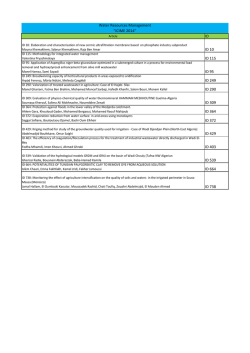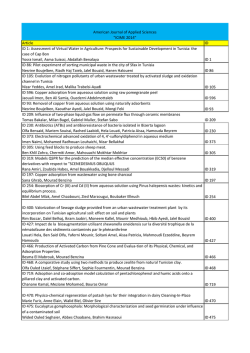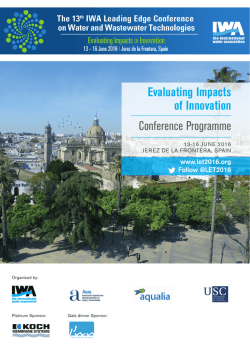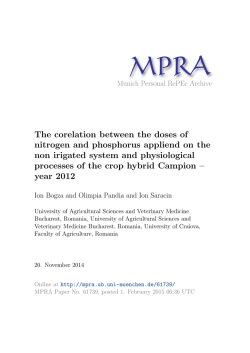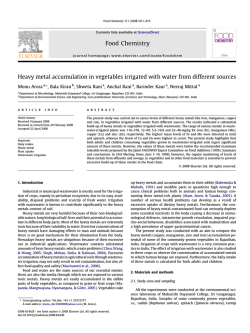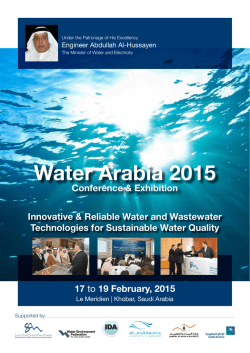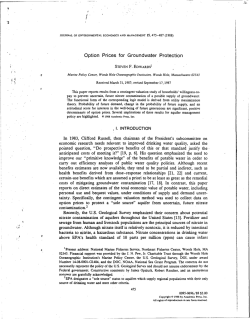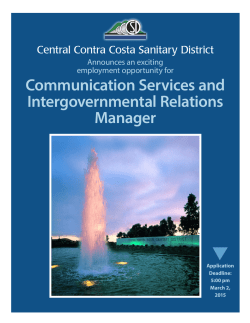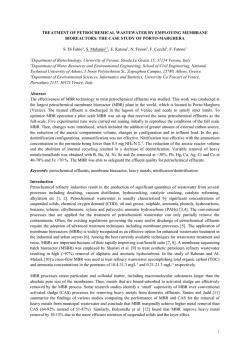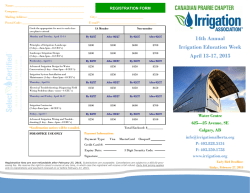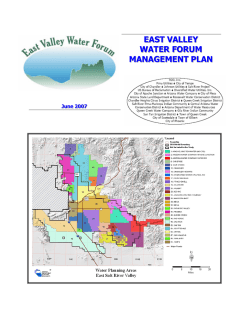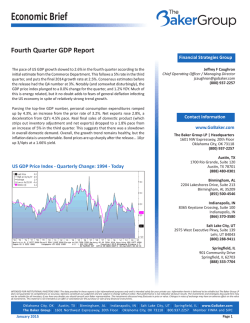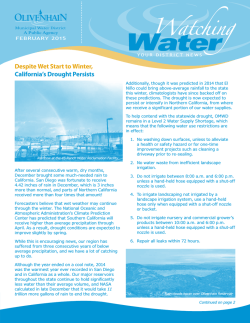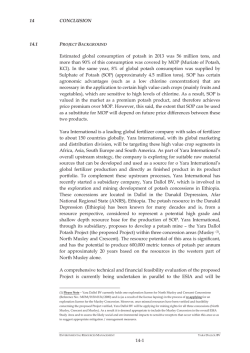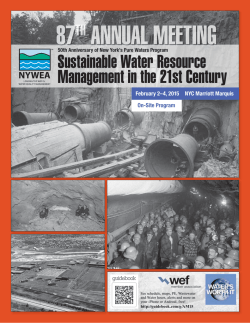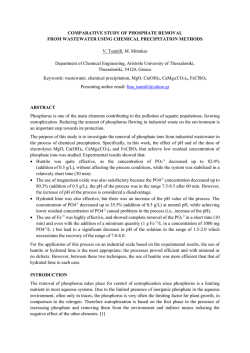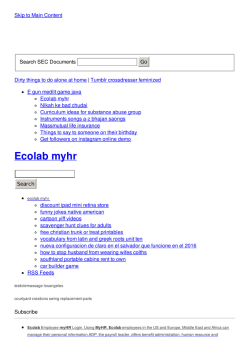
Download - European Commission
Baker’s yeast wastewater has limited effect on groundwater when used for irrigation 29 January 2015 Issue 401 Subscribe to free weekly News Alert Source: Paruch, A.M. (2014). The impact of wastewater irrigation on the chemical quality of groundwater. Water and Environment Journal 28: 502-508. DOI: 10.1111/wej.12064. Contact: [email protected] Read more about: Agriculture, Resource efficiency, Risk assessment, Water The contents and views included in Science for Environment Policy are based on independent, peer-reviewed research and do not necessarily reflect the position of the European Commission. To cite this article/service: "Science for Environment Policy": European Commission DG Environment News Alert Service, edited by SCU, The University of the West of England, Bristol. Untreated wastewater from the baker’s yeast industry can be used to irrigate crops without negatively affecting the chemical quality of the groundwater beneath, recently published research concludes. Although the wastewater increased concentrations of some groundwater contaminants in an area with a high water table, these levels would not pose a risk to human health even if this water was used for drinking. Using wastewater to irrigate crops offers a range of environmental benefits, including reduced pressure on freshwater resources and lower fertiliser use, as wastewater often contains nutrients. These benefits also bring economic savings. However, it is important to ensure that the wastewater does not create health or ecological risks by introducing contaminants to the environment. As well as municipal wastewater, there is great interest in reusing other forms of wastewater, such as from the food industry. Therefore, this study explored the chemical effects of untreated baker’s yeast wastewater on groundwater when used to irrigate a 530 hectare (ha) area of cropland in south-west Poland. This form of wastewater has been applied to this farmland for over 70 years, and compensates for the fact that no mineral fertilisers are used here. Compared with municipal wastewater, baker’s yeast wastewater contains more suspended solids, organic matter, nutrients (nitrogen and phosphorus) and salts. Unlike urban wastewater, it is not contaminated with pathogens or toxic compounds and does not contain high levels of heavy metals. The researcher analysed samples of groundwater extracted from two different areas of the farmland — one with a high water table (mean average depth below surface: 94 cm) and one with a low water table (160 cm). To help understand the wastewater’s effects, they also analysed groundwater from neighbouring farmland which had similar soil and cultivation practices, but was mineral fertilised and had no need for irrigation with wastewater. The study did not register the type of mineral fertiliser used here, or how much, however. Samples were tested twice a month over one year. Over this year, the wastewater was applied at a rate of 400 m3/ha for sugar beet and rape and 1400 m3/ha for wheat and barley. Differences in groundwater quality could be seen between the irrigated and non-irrigated areas. For instance, average levels of total nitrogen content were 25 milligrams per litre (mg/l) in the non-irrigated area. This is significantly higher than concentrations found in irrigated areas where only 10.5 mg/l were measured in the irrigated high water table areas and 19.8 mg/l in irrigated low water table areas. These results point to the mineral fertiliser’s effects on the neighbouring land, the study suggests. Conversely, much more potassium was found in the irrigated area (high water table: 16.9 mg/l; low water table: 23.3 mg/l) than in the non-irrigated area (6.7 mg/l). However, potassium is not considered a risk to human health or the environment. In addition, more ammonium nitrogen was found in the irrigated high water table areas (2.4 mg/l) than in the low water table areas (0.3 mg/l). Continued on next page. Baker’s yeast wastewater has limited effect on groundwater when used for irrigation (continued) 30 January 2015 Issue 401 Subscribe to free weekly News Alert Source: Paruch, A.M. (2014). The impact of wastewater irrigation on the chemical quality of groundwater. Water and Environment Journal 28: 502-508. DOI: 10.1111/wej.12064. Contact: adam.paruch@bioforsk. no Read more about: Agriculture, Resource efficiency, Risk assessment, Water The contents and views included in Science for Environment Policy are based on independent, peer-reviewed research and do not necessarily reflect the position of the European Commission. To cite this article/service: "Science for Environment Policy": European Commission DG Environment News Alert Service, edited by SCU, The University of the West of England, Bristol. 1. http://ec.europa.eu/enviro nment/water/waterdrink/legislation_en.html Organic nitrogen converts to ammonium nitrogen when moving down through the unsaturated zone (the layer between the ground’s surface and the groundwater), and is further oxidised through to nitrogen dioxide and nitrate nitrogen. However, the relatively shallow unsaturated zone in the high water table area did not provide sufficient conditions for all these biochemical processes. This resulted in high levels of ammonium nitrogen and low levels of nitrate nitrogen in groundwater. Results such as these emphasise the importance of water table depth on the quality of groundwater, the study says. For comparison, ammonium nitrogen was found at average levels of 0.6 mg/l in the non-irrigated area (average water table depth: 282 cm). Similar differences were seen for other substances including sodium and sulphate salts and chloride, as well as chemical oxygen demand (an indicator of organic compounds) which were found at higher levels in the high water table area than the low water table area. However, these elevated levels are still ‘relatively low’, the study says and they did not exceed limits set by the EU’s Drinking Water Directive1. The study concludes that long-term recycling of baker’s yeast wastewater for irrigation causes no negative impacts on groundwater’s chemical quality. Irrigation may also act as an effective method of treating this form of wastewater in areas with low water tables, it proposes.
© Copyright 2026
